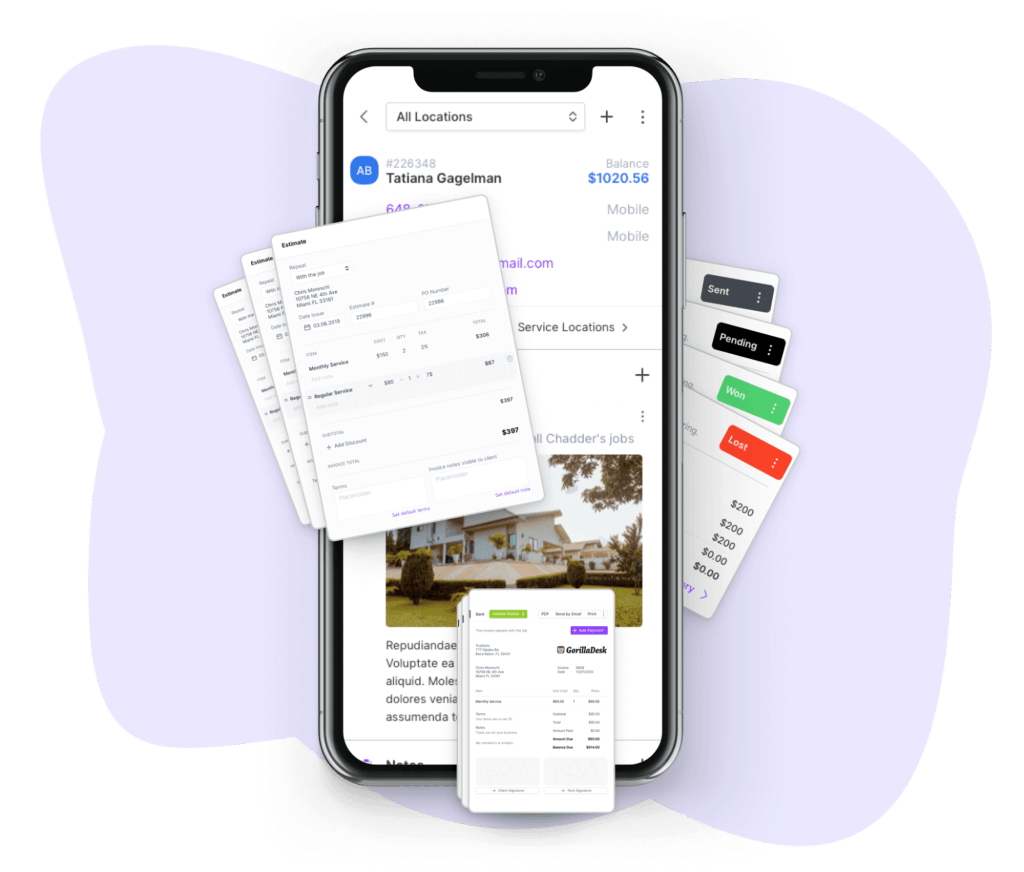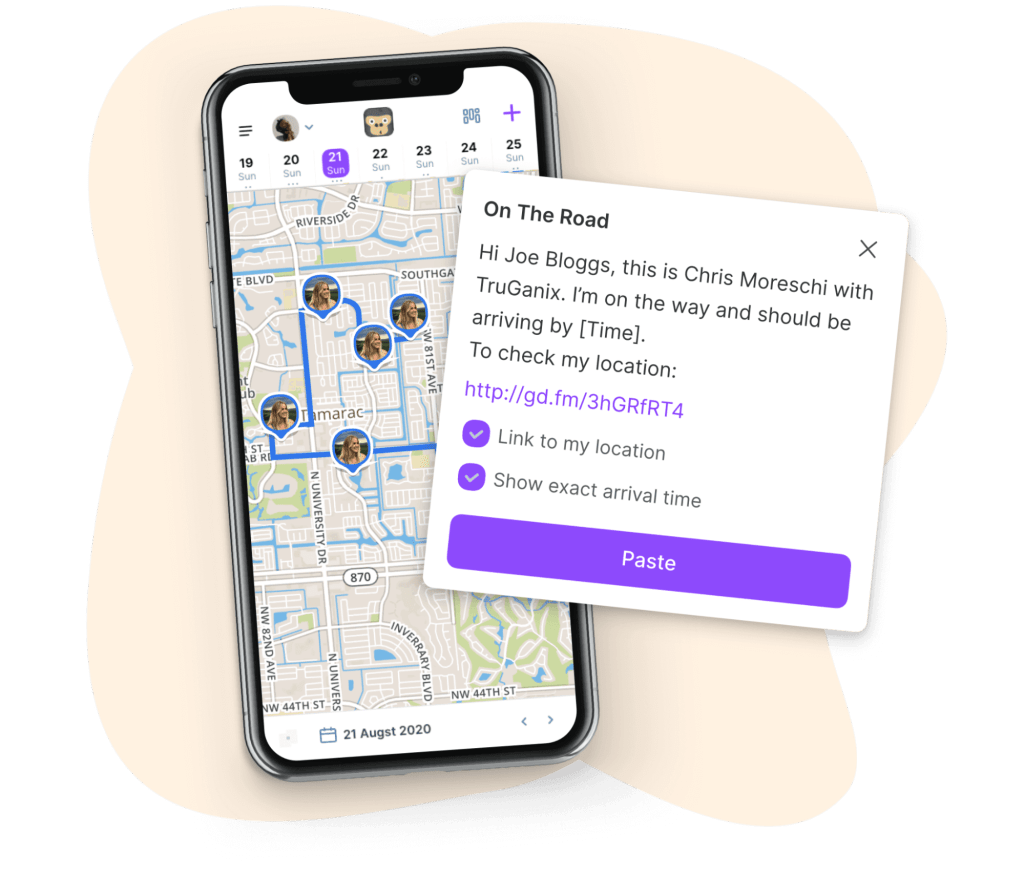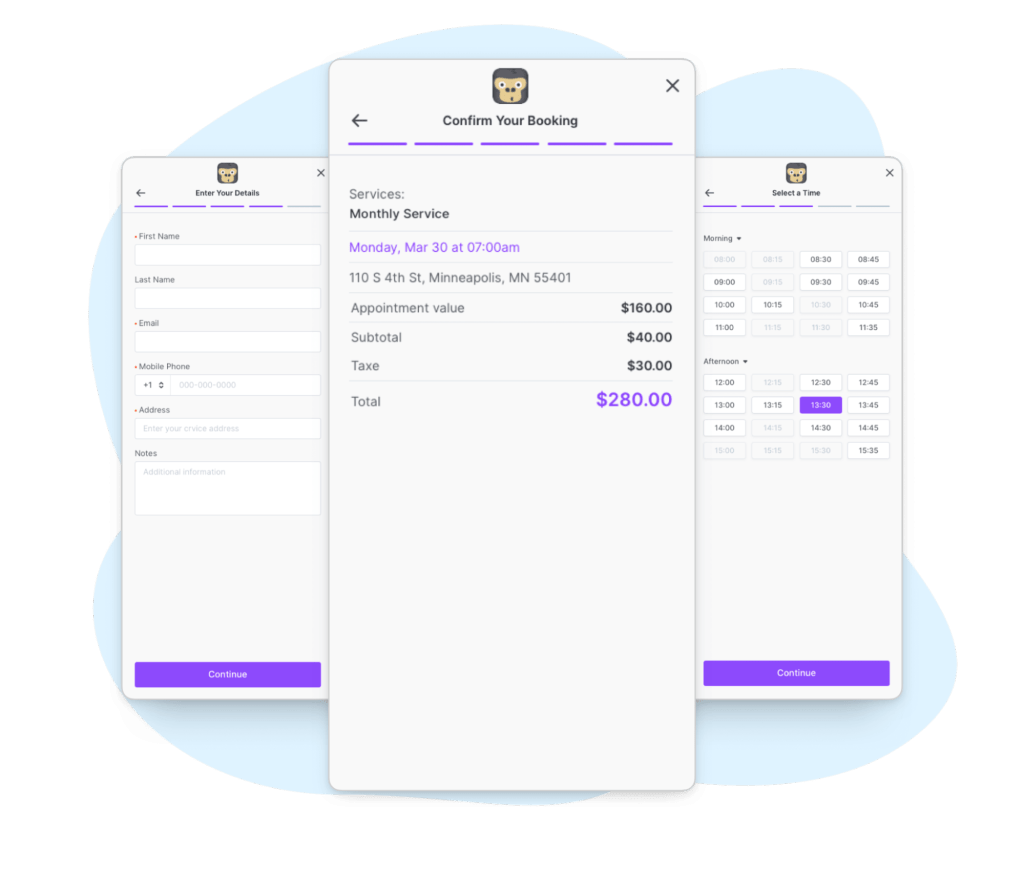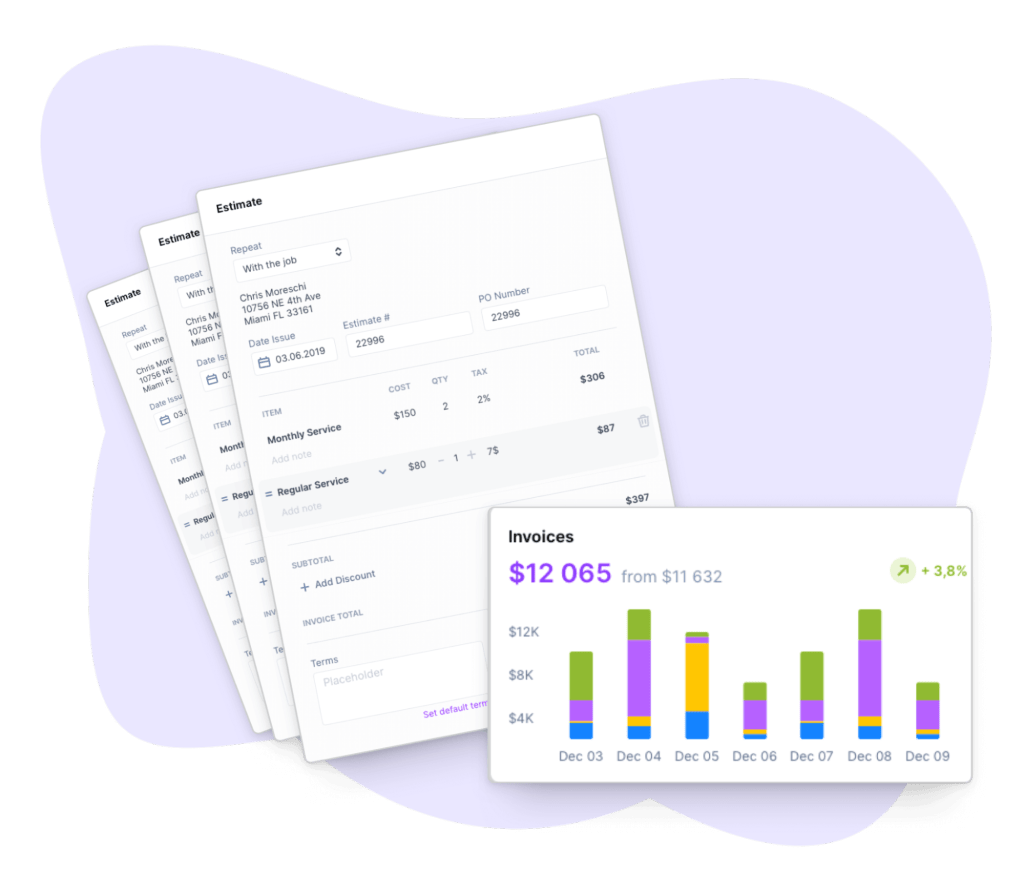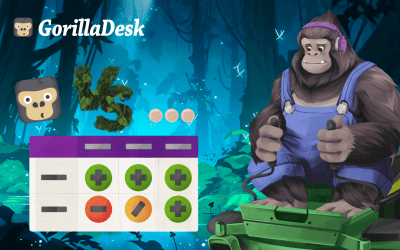Setting commercial pest control prices: How to attract and retain clients
GorillaDesk Staff

Are you considering offering commercial pest control services? This side of the industry is appealing thanks to the high demand from businesses that need your help with rodents, ants, and other pests.
Before you begin, it helps to understand the differences between commercial and residential pest control, how to meet customer expectations, and how to set commercial pest control prices that keep your customers coming back and your profits healthy.
How much does commercial pest control service cost?
Commercial pest control ranges from $35 to $2,000 or more per month, depending on the location and facility size.
Gathering intel on your competitors’ commercial pest control pricing is difficult. Many businesses only provide custom quotes for pest prevention in restaurants, stores, medical facilities, warehouses, and other commercial properties.
To give you an idea of commercial pest control costs across the US, here’s data from various cities and states:
- Los Angeles, California: $35–$2,107 per month, $343 for a one-time treatment, on average
- South Florida: $60–$100 per month, $500 to $1,500 for a single visit
- Louisiana: $35–$120 per month, $75 to $150 for an initial visit
- Las Vegas, Nevada: $30–$40 per month, $100 for an initial treatment
- New York City, New York: $150–$1,250 per month
- Utah: $39–$159 per month, on average
Other factors affecting commercial pest control costs include the type of pest and infestation size.
Commercial vs. residential pest control prices
How do residential pest control prices compare to commercial? Generally, residential services cost less, with an average monthly price between $40 and $70.
Commercial pest control services are usually more expensive than residential due to the complex needs of businesses. These include strict rules governing hospitality, manufacturing, and food industries and the fact that businesses need quick intervention so they don’t lose money while they’re shut down.
These complexities may require a custom pest control plan for each business you serve.
What factors affect pest control prices?
Keep these factors in mind when setting your commercial pest control prices.
1. Type of pest
Certain pests require different equipment and expertise to treat, and some pests require multiple treatments to eradicate. Common pests targeted by commercial pest control professionals include:
- Rodents
- Roaches
- Termites
- Bed bugs
- House flies and fruit flies
- Fire ants, carpenter ants, sugar ants, and more
2. Infestation size
Commercial properties have more space for pests to take over, which can hike up costs. The severity of infestation also impacts cost. Increase your prices to cover both costs and avoid underpricing your services.
3. Location
Warmer climates, rural areas, and denser populations help pests reproduce quickly, leading to more pest infestations. This requires businesses to sign up for monthly or quarterly pest control treatments to prevent future pest problems.
If you’re in a pricier area, you may need to increase prices to cover higher equipment, supply, and labor costs.
4. Treatment method
Will you offer special treatments, like eco-friendly chemicals, or niche services like Africanized honey bees? Pest control specialists offer unique expertise that justifies a higher price.
5. Facility size
Large warehouses, office buildings, hotels, and apartment complexes have more space to treat than a single-family home.
Additional square footage also means more nooks and crannies, food, or people that attract or spread pests. These factors make monthly or quarterly treatments important.
6. One-time visits vs. recurring service
Residential properties may need one-off or seasonal treatments, but commercial properties often need consistent preventative services. This makes it more likely for commercial customers to sign up for a subscription service plan that covers multiple prevention treatments.
How to set your commercial pest control prices
Many commercial pest control companies offer tiered plans and subscriptions similar to residential service plans. Custom plans and hourly rates help you cover costs associated with complex infestations or unique business needs.
Here’s a quick look at different plans your pest control company can offer, plus the pros and cons for each.
1. Hourly rates
Flexibility makes hourly rates ideal for one-time or specialty pest treatments. They also ensure your labor costs are covered if technicians encounter unexpected pest problems.
Pros:
- Lets you charge based on time and effort
- Shows customers how the final cost is calculated
Cons:
- Provides unpredictable revenue
- Could scare customers away because of unpredictable costs
- Lacks a safety net for slow business periods
2. Flat fees
Blue Star Pest Control charges $5 per door for treating apartment complexes with five or more units. (Source: Blue Star Pest Control)
Charging a flat-rate fee simplifies the cost of pest control for large spaces like warehouses, manufacturing plants, and apartment complexes. For example, Blue Star Pest Control in Louisiana charges a flat fee per door when providing pest control for apartment complexes.
Pros:
- Attracts customers with predictable costs
- Simplifies pricing for business owners and customers
- Gives you steady revenue
Cons:
- Potentially leads to over- or under-charging due to inflexible pricing
- Lacks transparency when showing customers final prices
3. Subscriptions
Recurring pest control services benefit both your pest control company and commercial properties. Along with steady income for your business, they provide continuous pest treatments at a predictable cost.
Pros:
- Provides steady, predictable income
- Encourages long-term customer relationships
- Works well with initial inspection discounts
Cons:
- Makes it difficult to determine prices that cover costs
- Requires a long-term commitment that might put off customers
4. Pay-as-you-go pricing
If commercial customers are iffy about committing to a subscription or long-term pest control plan, pay-as-you-go prices may be more appealing. This model can be a good fit for businesses with smaller budgets that still need a professional exterminator.
Pros:
- Let customers pay for pest control treatments when needed
- Reduces financial risk for commercial businesses
Cons:
- Potentially results in unpredictable revenue
- Makes it hard to set prices that cover costs
- Risks more customer churn due to the lack of long-term contracts
5. Tiered plans
Commonly used for residential pest control services, tiered plans also work for commercial pest control. For example, you could create a tiered commercial pest control plan that adds additional annual bed bug treatments as the price goes up.
Pros:
- Increases pricing flexibility for customers
- Simplifies upselling by adding compelling features to pricier packages
- Creates transparency with clearly defined services and time frames
Cons:
- Makes it challenging to price services for profit
- Potentially overwhelms customers with too many options
6. Custom plans
Tailor pest control service plans for commercial customers based on their facility type, pest problem, and industry. Custom plans let you offer specialized services and stand out from the competition. You can bundle complementary services in a custom plan, like landscaping or insulation replacement.
Pros:
- Customizes services and prices to suit each customer
- Sets the stage for upselling or cross-selling with multiple customizations
- Lets you charge more for niche services or tricky pest problems
Cons:
- Deters customers due to unpredictable costs
- Needs consistent customer volume for revenue flow
9 ways to retain commercial customers and maximize profits
Maintaining relationships with customers has a major impact on profit margins.
A Harvard Business Review article says it costs five to 25 times more to acquire a new customer than to retain an existing one. While this data isn’t new, rising acquisition costs show the benefits of customer retention. Pest Control Technology found that pest control customer acquisition costs rose to an average of $63 per customer in 2023.
How do you keep commercial customers coming back for more? Here are a few ways:
1. Invest in customer experience
GorillaDesk’s CRM tracks past customer quotes, service history, and notes. (Source: GorillaDesk)
Creating positive customer experiences results in tons of benefits. PwC found that 80% of consumers say a positive experience comes down to speed, convenience, helpful staff, and friendly employees.
Using a customer relationship management (CRM) platform is a major way to deliver these qualities to your customers. A CRM like GorillaDesk lets you record customer information, request feedback, and track past services. You can then easily personalize appointment confirmations, service follow-ups, and other outreach.
Personalize your emails: Try these 17 email templates that inspire customers to take action.
2. Personalize and automate outreach
GorillaDesk sends automated “On My Way” text messages to keep customers updated. (Source: GorillaDesk)
Personalization can encourage customers to purchase recurring treatments. Most people (83%) make repeat purchases at businesses that get to know them.
GorillaDesk personalizes and automates your outreach. Send appointment confirmations and reminders to reduce last-minute cancellations and no-shows. Text customers to share your ETA and appointment details. Follow up for feedback and to address issues.
3. Offer specialized services
If you offer unique pest control services in your area, you can easily charge more. For example, if no other businesses offer termite extermination, customers are more likely to pay a premium for your expertise.
Offering special services like eco-friendly treatments or 24/7 emergency pest control can also set your business apart and justify higher prices.
4. Provide top-notch customer service
Qualtrics’ 2024 State of Customer Experience Report notes that 47% of customers base their purchase decisions on customer service quality, making it more important than low prices (43%).
Great customer service starts with your employees. Train everyone, including technicians and office staff, on customer service techniques.
Make sure your employees get fair pay, high-quality benefits, and chances to grow their careers. After all, happy employees mean happy customers.
5. Create an online presence
Help customers find you by building a website and posting on social media.
Your pest control website should include your contact info, service details, and how customers can get an initial inspection and estimate. If commercial customers hesitate to sign up for services due to budget concerns, ease their worries with transparent plans and pricing.
6. Prioritize reliability
Build a reputation by providing reliable service and exceeding expectations. “Always give 110%,” says Kathy Daw, owner of Bob’s Pest Control in El Paso, Texas, in Pest Management Professional’s 2023 State of the Industry report. “Provide pest control service as if you’re treating your parents’ house.”
Become known as the go-to pest control brand by prioritizing:
- Efficient scheduling and punctuality
- Optimized technician routes
- Proactive communication about delays or schedule changes
- Transparent pricing, service details, and chemical data
These tips may seem obvious, but following through on each one helps you exceed customer expectations.
7. Enable self-serve options
GorillaDesk lets customers book pest control services and pay invoices online. (Source: GorillaDesk)
Did you know 88% of customers expect you to have a self-service portal? Online portals are quick and efficient, letting customers find answers without chatting with an agent—or waiting on hold.
GorillaDesk’s customer portal lets commercial customers book new service requests online and see previous and upcoming appointments. The portal also offers convenience and transparency by letting customers view and sign estimates and then pay invoices online.
8. Offer transparent pricing
Starting a pest control business requires market research, and you need to continuously monitor your competitors.
This research helps you figure out if your pest control prices are competitive. Pair competitor pricing research with a clear understanding of business expenses and profit margins. Together, this information helps you set competitive prices that contribute to your profits.
9. Invest in operational efficiency
Check invoice status with GorillaDesk’s built-in reports. (Source: GorillaDesk)
Investing in pest control software streamlines your operations, saves money, and improves productivity.
GorillaDesk makes life easier by automating routes, scheduling client jobs, and enhancing customer communication. It tracks chemical usage in the field to keep inventory updated. You can sync to QuickBooks Online to streamline invoicing and cut down on time spent sending payment reminders.
Pest control software provides access to data for forecasting sales, prioritizing services based on popularity, and meeting regulatory requirements.
Unlock cost savings and data for competitive pest control prices
Understanding commercial pest control pricing benchmarks helps you set competitive prices that balance customer satisfaction with profitability. You can use custom plans or pay-as-you-go pricing strategies to meet commercial customers’ needs.
When setting prices, make sure everything is clear for your customers. This encourages customers to stick around for the long haul, which is great for your profits.
Investing in a CRM helps strengthen customer relationships and streamline your business operations. Find out how GorillaDesk’s CRM, customer portal, and automation support customer retention. Start your 14-day free trial today.
Other posts to check out
Make the move from paper to digital: A step-by-step guide for field service pros
If your field service business is still doing business on paper, it’s time to make a change. Here’s how to find success with a move to digital.
Pest control marketing: Let’s make that phone ring
With so many other local pest control companies making competition tight, keeping that phone ringing with new customers may not feel as easy as you thought. To keep your pest control business growing takes marketing know-how. Here are our best tips.
How to get more positive customer feedback
Customers trust online reviews just as much as word of mouth from friends and family. The truth is: Online reviews can make or break your local services business. Here’s how to build that glowing reputation your service deserves.
Tree service marketing: 11+ ideas to drive more customers in 2025
Drive more leads with our ultimate tree service marketing guide! Discover 11+ proven strategies to grow your business and attract the right customers.
How to start a tree service business in 2025
Learn how to start a tree service business with step-by-step guidance on planning, licensing, equipment, marketing, safety, and scaling your company.
Landscaping services list: What to offer your customers
Discover the top landscaping services to offer for maximum profit. From design to maintenance, expand your business with our comprehensive landscaping services list.
Transform your business
Try it free for 14 days. No credit card required. Instant setup.
★★★★★
We will be customers for life
“I can not say enough good things about GorillaDesk it saves us so much time and money. The customer service is the best. I would recommend GorillaDesk to anyone no matter what industry. I trained my employee in 5 minutes on how to use it. We will be customers for life.”

Ryan Sullivan
Business Owner
Ready to Get Started?
Get all our amazing features and top-rated support, with no credit card required.

